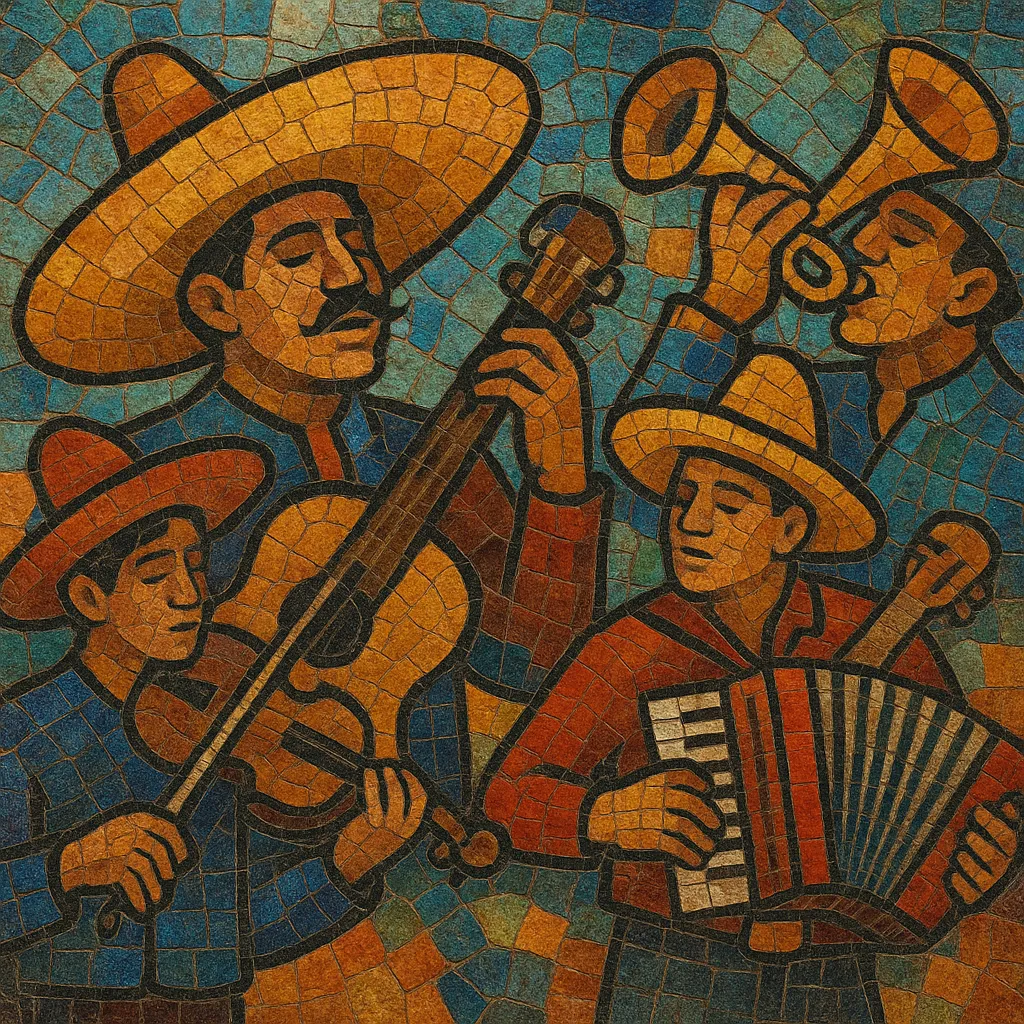Mexican music is the broad, living tradition of musical practices that emerged in Mexico from the encounter of Indigenous Mesoamerican cultures with Iberian (Spanish) and later African and pan‑European influences.
It encompasses rural and urban styles, ceremonial and popular forms, and both acoustic and amplified idioms—from string‑band sones, corridos, and rancheras to brass‑band banda and accordion‑driven norteño. Hallmark features include lively dance rhythms (polka, waltz, huapango/son), bright timbres (violins, trumpets, harp, reeds, accordion, tuba), strong storytelling, and expressive vocalism with gritos, melismas, and call‑and‑response.
While its roots stretch back to the 16th century, Mexican music has continually evolved through media (radio, cinema, recordings), migration, and cross‑border exchange, shaping and being shaped by Latin American and global popular music.
Spanish colonization brought Iberian song forms (romances, villancicos), instruments (guitars, violins, harps), and Catholic liturgical music, which mixed with Indigenous Mesoamerican practices (Nahuatl and Maya ceremonial music, pre‑Hispanic drums and flutes). African diasporic rhythms arrived through colonial routes. In cities and missions, baroque and folk traditions intertwined; in the countryside, regional string ensembles and local dance repertories began to take shape.
After independence, regional identities crystallized. European social dances—polka, waltz, schottische, mazurka—were absorbed, especially in the north, influencing norteño rhythms and repertoire. Narrative corridos spread as sung newspapers, while son varieties (son jalisciense, son jarocho, son calentano, son istmeño) matured with local instruments and dance practices. Brass bands proliferated in civic and military contexts, especially in the northwest.
Radio, records, and Mexican cinema (the Golden Age) propelled ranchera, mariachi, bolero ranchero, and trío romántico to national and international prominence. Orchestras and later big brass bandas professionalized; norteño accordion ensembles flourished along the border. Songwriters like Agustín Lara and José Alfredo Jiménez defined repertory; iconic voices (Pedro Infante, Jorge Negrete, later Vicente Fernández and Juan Gabriel) shaped the idiom’s vocal style.
Migration intensified cross‑border exchange, giving rise to tejano, tex‑mex, and grupera, and expanding banda and norteño markets in the U.S. Urban and youth scenes fused tradition with rock, ska, hip‑hop, EDM, and pop. Corrido aesthetics evolved into narcocorridos and, recently, corridos tumbados and corridos bélicos, while electronic tribal guarachero, sierreño, and electro‑corridos exemplify ongoing innovation. Today, Mexican music is both heritage and pop engine across the Americas.


